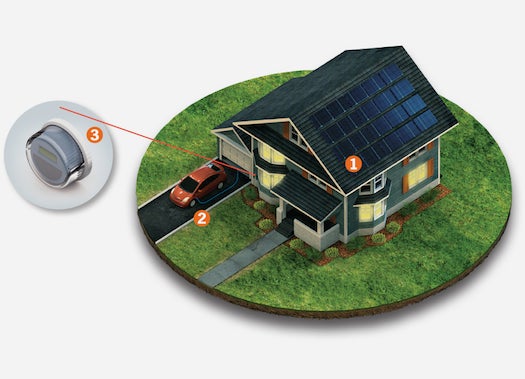How To Create A More Resilient Power Grid
When a failure occurs along a line now, everything downstream from that point loses power. But there's a better way.


Home Grid
HOME
1) Generate Power
Home solar systems can save money and reduce demand on power plants. But if they can’t automatically disconnect from the grid during a blackout, they must shut down. Researchers at the University of Arkansas have built a device that will allow homeowners to produce and store backup power.
2) Get A Backup Drive
With technology that auto manufacturers are now developing, electric cars can act as backup power sources during a blackout. A fully charged vehicle might power a home for a day or two.
3) Install Smart Meters
Forty million houses now have smart meters, digital devices that can provide homeowners with detailed information about their energy use. Over time that’s led to a 5 percent reduction in consumption. During a storm, they enable the utility to recognize a power outage immediately.

Neighborhood Grid
NEIGHBORHOOD
1) Bury The Lines
Because bad weather is the most common cause of blackouts, burying power lines can get them out of harm’s way. Subterranean systems often cost 4 to 10 times more to install, but they’ve been shown to reduce outages by about 70 percent. Added incentive: aesthetics. They often raise property values.
2) Share Some Juice
Community batteries installed next to neighborhood transformers could be used to provide emergency backup power during an outage. One battery would serve a handful of homes for a couple hours.
3) Maintain Services
Small, local power plants can keep the lights and heat on at critical facilities, such as hospitals. Most systems rely on the local natural-gas supply, but solar and wind can also provide a valuable backup—plus, excess power can sometimes be sold back to the utility.

Regional Grid
REGION
1) Control Surges
The scale of many power failures could be reduced by fault-current limiters, devices that absorb and control the surges in current that normally trip circuit breakers and lead to mass outages.
2) Follow The Flow
To find a power outage today, utility workers often resort to driving around, searching for an offending tree. Sensors on transmission lines can save time and money by automatically providing utilities with real-time information on the condition of lines and the level of power flow.
3) Build Diversity
Adding more clean, renewable energy sources to the grid helps spread power generation throughout the day, especially during peak hours. Diversity also reduces the impact of any one plant going down.